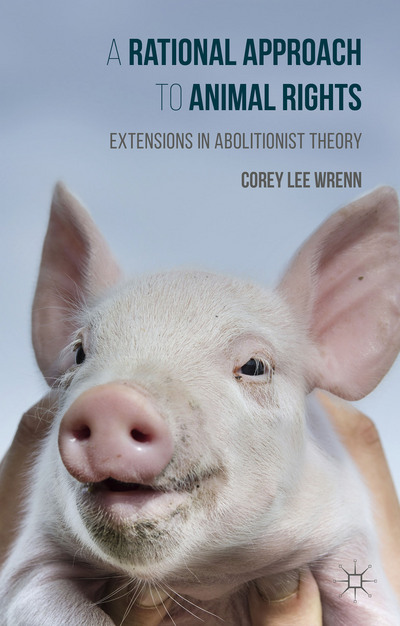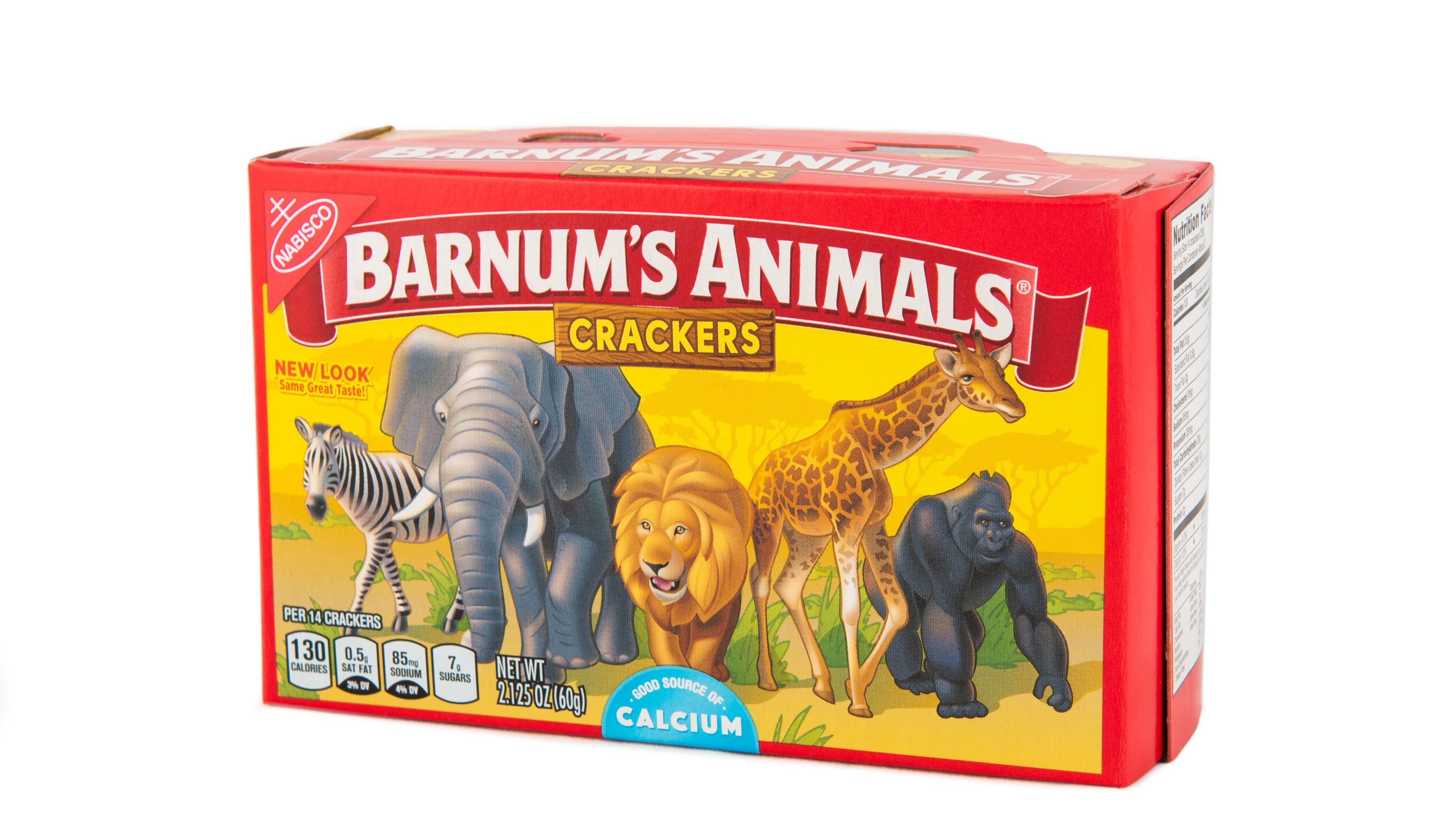In a 2016 blog post, I tackled the cheeky but oft-espressed question as to whether or not animal crackers are vegan. Technically, the ingredients are vegan, but what do these cookies symbolically represent in a society that is deeply speciesist?
In 2018, Nabisco revamped their packaging design to remove the old circus car cages at the bequest of People for the Ethical Treatment of Animals (PETA). Although this marketing tactic suggests a greater respect for Nonhuman Animal autonomy than the old packaging which had featured them as inmates, there are a number of fundamental issues that remain unaddressed.
Are Animal Crackers Vegan?
Animal crackers (comprised primarily of wheat flour, sugar, salt, and leavening agents) usually do not contain actual animal ingredients. They are designed for a long shelf-life, and, since animal corpses and fluids are quick to putrify, plant-based cookies preserve better.
Common cookie additives like milk derivatives and eggs add nothing to the flavor but are used instead for binding purposes. These additives are utilized instead of plant-based binders due to their availability; meat and dairy industries sustain themselves and remain profitable through the repurposing of waste products like whey and gelatin. Animal byproducts glut the market and are simply cheaper ingredients for cookie manufacturers.
Although Nabisco’s animal crackers are technically vegan, they certainly capitalize on this glut of cheap animal ingredients for a large variety of other products. Nabisco animal crackers may be vegan, but Nabisco itself is not.
What Do Animal Crackers Mean Symbolically?
Ingredients are only part of the story. When it comes to food, processes of intentional invisibility serve the cultural reproduction of speciesism. Vegan sociologists note that processing, packaging, and labeling are applied to effectively remove any reference to the nonhuman persons killed to provide animal products for human consumption. Furthermore, ag-gag laws in many states in tandem with the 2006 Animal Enterprise Terrorist Act now make it exceedingly difficult for the public to access information about the exploitation and killing of animals. This manufactured and institutionalized invisibility is unique to the animal sector of the food industry.
In the case of animal crackers, however, Nonhuman Animals are intentionally visible. Animal crackers are, as a result, functional in their ability to socialize children with ideologies of human dominance. The consumption of animal crackers reiterates to children their privileged access to the natural world and any subordinates who live within it. By being able to “collect” animals, pick them up, handle them, and eventually eat them, notions of human supremacy are underscored.
Wait, What about Gingerbread Men?

Of course, bakeries manufacture human-shaped cookies, too, but these products usually take on generic forms. If they were designed to specifically resemble persons of African descent and were marketed to white children, for instance, the symbolic inequality manifest in the product and its consumption would be evident. In a white supremacist society within which people of African descent are systematically underemployed, victimized, and incarcerated, it would be morally problematic to objectify and infantilize this marginalized group even further by turning them into cookies for white kids.
 In fact, this practice does take place in the Netherlands during the Christmas holidays. African colonial subjects known as “Black Petes,” who are cartoonized as St. Nicholas’s “little helpers” are fashioned into cookies and chocolates for white children to consume. Not surprisingly, this tradition is highly controversial.
In fact, this practice does take place in the Netherlands during the Christmas holidays. African colonial subjects known as “Black Petes,” who are cartoonized as St. Nicholas’s “little helpers” are fashioned into cookies and chocolates for white children to consume. Not surprisingly, this tradition is highly controversial.
The cultural context of animal crackers must be considered. Animal crackers are marked to human children in an anthropocentric society that engages in widescale, systematic violence against animals. As such, animal crackers are symbolically potent.
Is Nabisco’s New Packaging Vegan?
In the new Nabisco packaging, the depicted Nonhuman Animals are no longer categorically separated, stacked, and placed on display for the human gaze. They are now grouped together in solidarity moving toward the viewer with a commanding presence.
Nabisco’s decision reflects a larger trend in American industry. Companies that rely on all sorts of horrible animal exploitations have taken a cue from the Nonhuman Animal rights movement and increasingly frame their exploitation as “happy.” So, while animal crackers still symbolically represent human control over other animals, human consumers can avoid any feelings of guilt and are less likely to question their entitlement since the animals appear to be consenting, happy, and free. This same framing is engaged by zoos, circuses, and meat, dairy, and egg enterprises that oppress actual Nonhuman Animals.
Dropping the imagery of the circus indicates cultural progress since Nabisco’s classic cookies have played a part in the romanticization of an inherently inhumane industry. Yet, Nabisco’s focus on freeliving species in the context of the circus imagery it employed for decades could actually aggravate symbolic inequality. There is an element of thrill associated with the control of persons who are culturally understood to be uncontrollable. It is entirely possible that children will experience even greater feelings of supremacy and entitlement through repeated consumption of Nabisco’s now wild but capturable animal crackers.
This post was updated on August 31, 2019 to include mention of “Black Petes” with compliments to Geertrui Cazaux for the suggestion.

Readers can learn more about the sociology of veganism in my 2016 publication, A Rational Approach to Animal Rights. Receive research updates straight to your inbox by subscribing to my newsletter.
